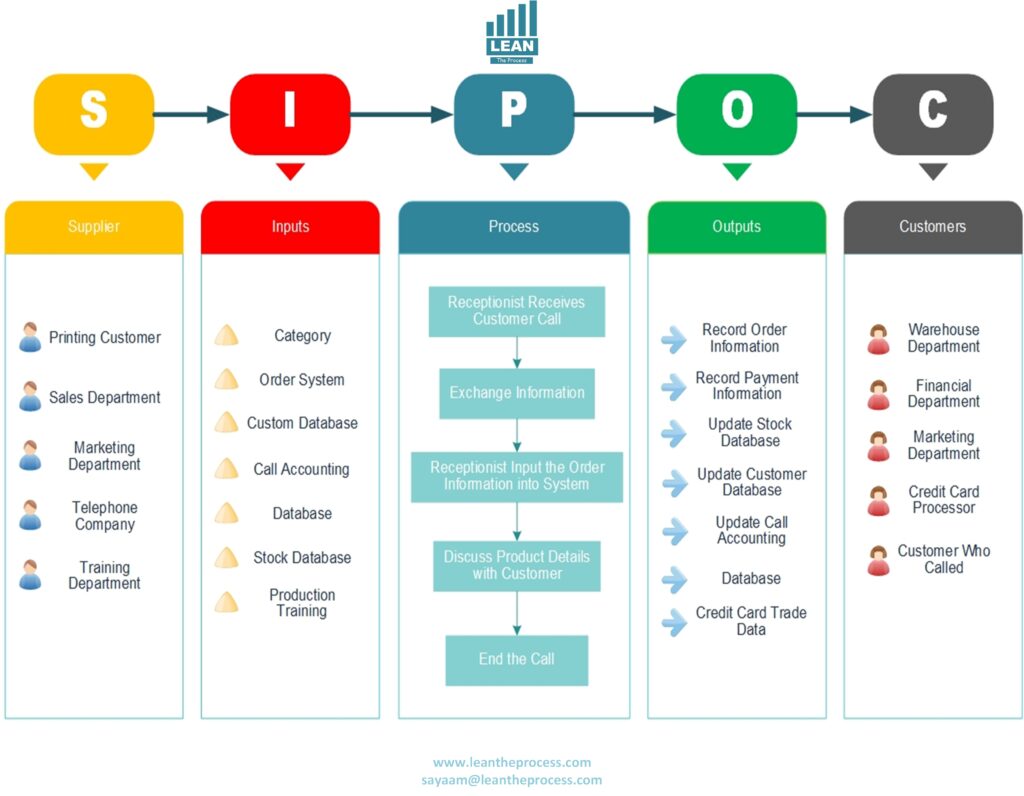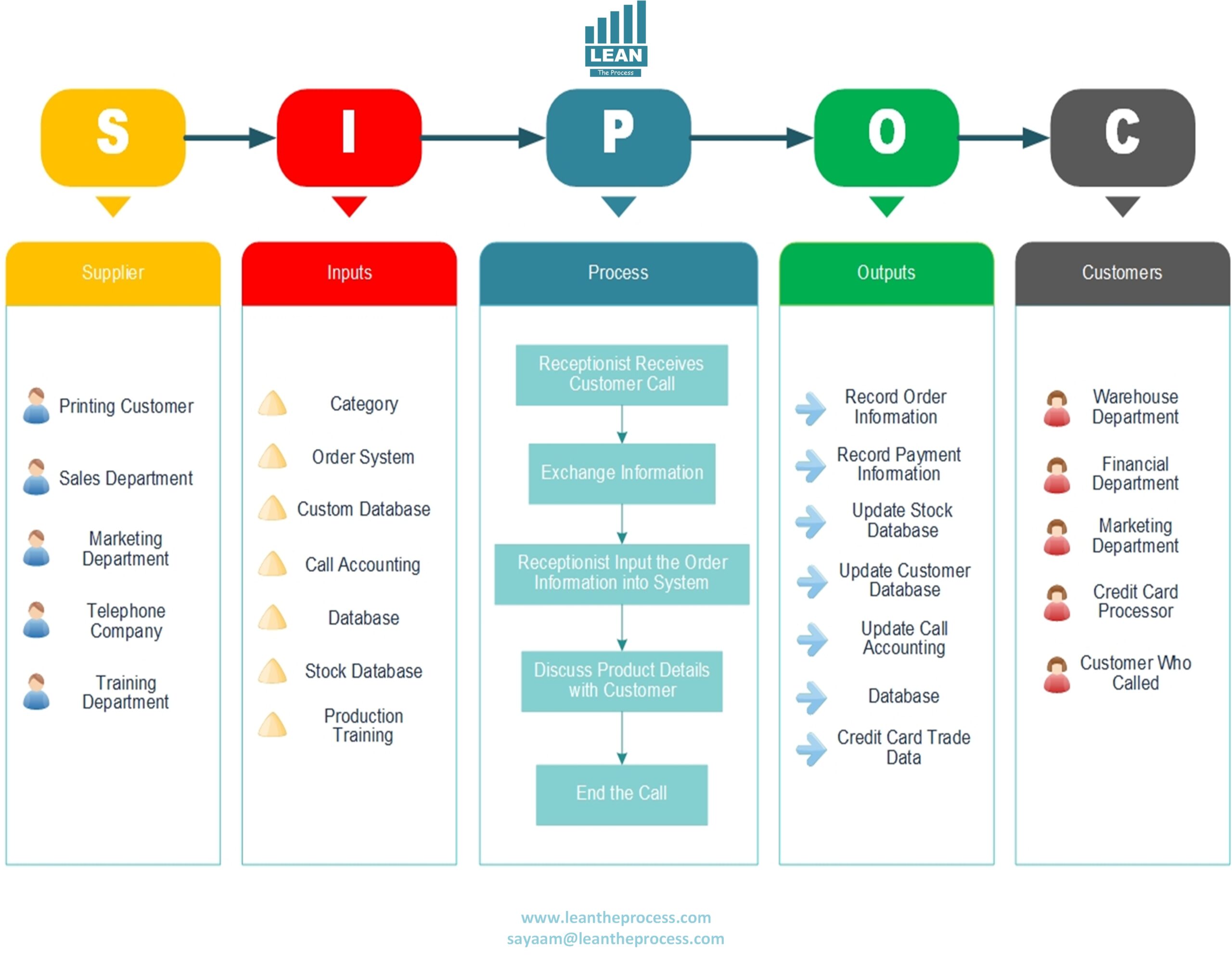The SIPOC diagram is one of the easiest, but effective tools of process improvement which helps to map and rationalize processes of the business at high level. SIPOC refers to suppliers, input, process, outputs as well as customers. With the help of SIPOC diagram, organizations can clearly express a picture of how the inputs of the suppliers are converted into an outcome by a process and on the other end are the deliverables to customers. The macro-view of SIPOC transforms it into one of the fundamental tools of Lean Six Sigma and other approaches to quality management.

What is SIPOC Diagram?
SIPOC diagram is basically a graphical representation of any given process which holds all the important aspects of a given process in one frame. The left starting with Suppliers, who supply the required Inputs in form of raw materials, information or resources. All these inputs are taken in the Process which is made of important steps, which convert the inputs to Outputs. Lastly, these products are deployed to Customers who may be either internal or external stakeholders. This simple version assists teams to figure out the possible sources of waste, communication error, or defects within a short time.
Why use a SIPOC diagram?
Among the greatest advantages of a SIPOC diagram, there is an opportunity it provides to align the teams with the common picture of a process in question and start with a better in-depth analysis. The problem with the unclear scope or undetermined boundary is that teams usually fail to succeed when introducing a process improvement project. Designing a SIPOC diagram, the project teams makes a clear idea about the suppliers and the customers, the inputs and the outputs, the start and the finish of the process. This keeps all at the same wavelength which would result in effective problem-solving.
Best Practices for using SIPOC
In order to ensure maximum use of a SIPOC diagram, it is advisable to make it simple and not confuse. Don not get lost in details, in particular, bear in mind that SIPOC is supposed to result in a bird view. Apply it during the Define stage of a project (assuming that you are using the DMAIC process in Lean Six Sigma) to define scope and avoid scope creep. Also, the intended communication benefit of SIPOC is to communicate the process overview to interested parties or sponsors or even to new team members.
Final thoughts on SIPOC diagram
Within the modern business world also of intense competition, organizations are looking towards processes and process improvement in trying to come up with more to offer to their respective customers. SIPOC chart is an indispensible element in creating and appreciating the envisioning of the flow of the processes between the suppliers and customers. Preventing a process bottleneck or designing a new project or training people on Lean Six Sigma in your organization-regardless of the case, you are facing, a SIPOC diagram may assist you in overcoming the confusion and getting meaningful changes made. This is the time to start using SIPOC as a part of your process improvement efforts and as the foundation of long-term success.
